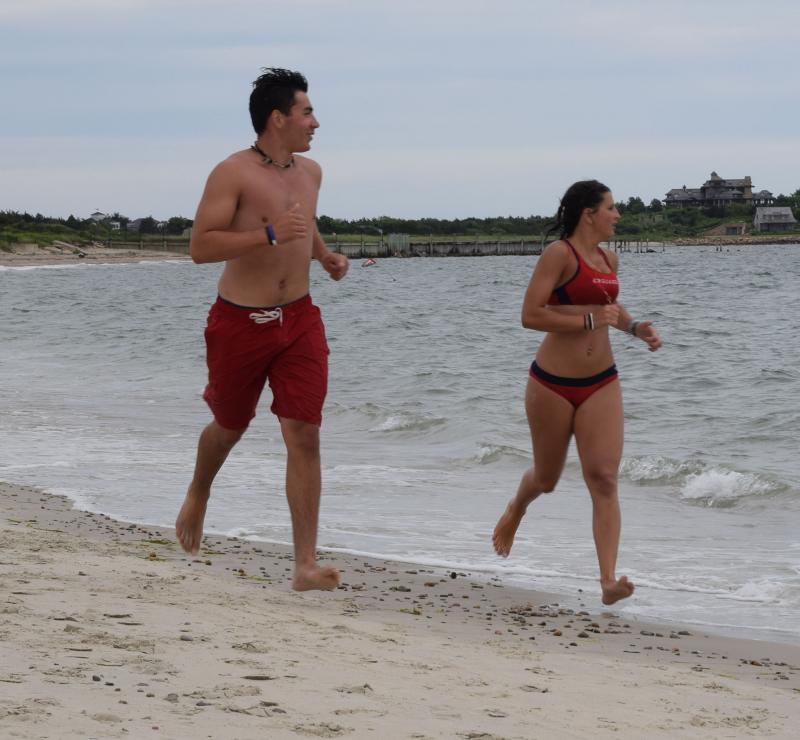Lifeguards practice skills at training exercises
Round Hill Beach lifeguards sprang into action on June 27 after receiving a report of a person struggling in the water. Within a few minutes the victim was brought to shore, but then the lifeguards learned a second person was still in the water.
In this case, the “victims” were actually fellow lifeguards, and a weighted pillow to simulate a person laying on the ocean floor. And it was not a real emergency, but rather part of a training exercise on the beach on June 27.
Although Dartmouth’s lifeguards participate in routine training, this program was special because it involved coordination from Dartmouth Fire District No. 1 and STAT EMS. Lifeguards learned how to interact with each agency in an emergency, from making the rescue itself, to placing the initial 911 call and requesting emergency services.
Lifeguards also learned an important lesson about just how long it takes first responders to arrive at Round Hill. Response times from Fire District No. 1, both on land and at sea, can be about 12 minutes, said Parks and Recreation Director Tim Lancaster.
“It gives them a real understanding of how long it takes for them to get here,” Lancaster said. “It takes a long time, and in reality the whole rescue should be done before they get here.”
Bryce Boswell, one of the beach supervisors, oversaw rescue operations. Using a megaphone, he directed his fellow lifeguards in a “sweep” of the beach floor for a missing person during a drill after one of the recovered victims told responders there was still someone else missing in the water.
“We want to make sure all the guys are organized, and being the ones making the decisions,” Boswell said.
Others, like Shane Rose, participated in their very first live rescue drill. It was an eye-opening experience, Rose said, especially being able to test out skills he learned in lifeguard training in the real world and seeing how important communication is in an emergency.
“This was different than the training course, because we were in the ocean, and at the training course it was just a pool,” Rose said.
And how did they do? During the exercise, conditions were less than ideal. With cloudy weather and choppy seas making visibility difficult, during one of the drills the lifeguards still found the “victims” in several minutes.
After water training, lifeguards received tips from STAT EMS personnel on handling general medical emergencies.

















